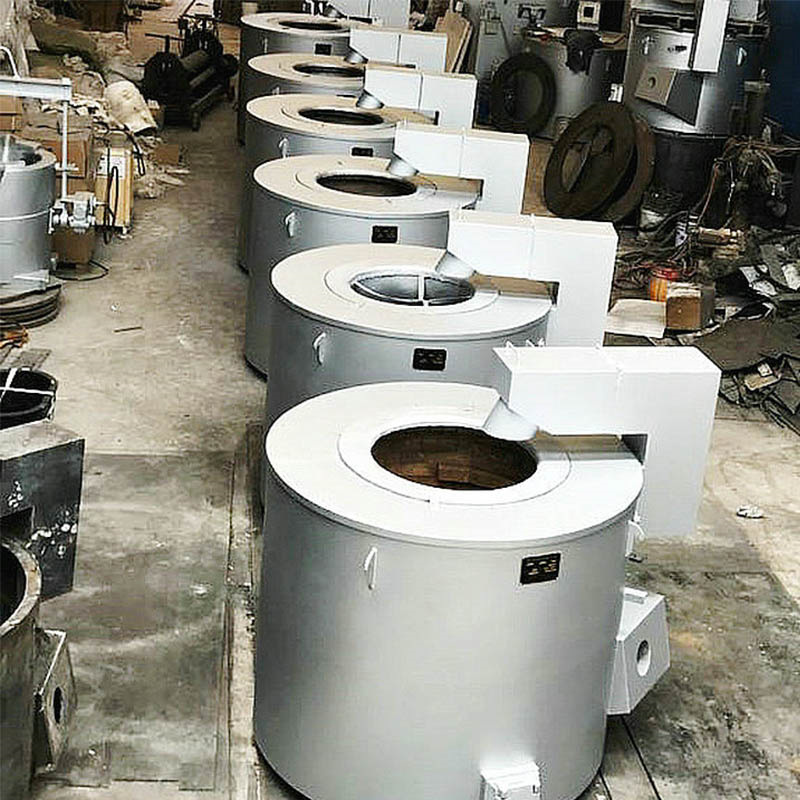The crucible furnace is the simplest smelting equipment, mainly used to melt copper, aluminum and other non-ferrous metals with low melting points. The melting furnace melts the alloy in the crucible and transfers the heat from the crucible to the charge, so that there is no direct contact with the combustion products. Therefore, during melting, the gas has little effect on the alloy composition, and the temperature of the molten pool is relatively uniform during melting. This technology has disadvantages such as low thermal efficiency, high oil consumption rate, small crucible volume and poor working environment.

During smelting, the metal is placed in a container called a crucible. The crucible is placed in the furnace and diesel, heavy oil, coal gas or coke is used as fuel. The materials used for the crucible are: graphite, refractory clay, cast iron, etc. The furnace body has three types: pit type, fixed type and rotary type. There is also a resistive crucible, which is generally small and generally used in laboratories.
The crucible furnace is a new type of crucible furnace with a simple structure, low investment, and short production cycle. However, the crucible furnace has low energy efficiency, low yield, and a harsh working environment, and is no longer suitable for large-scale production.
Crucible furnaces have long been used to melt copper alloys. Now, crucible furnaces for melting copper alloys are widely used. In the past, the fuel was coal, while today's fuel is heavy oil, natural gas, electricity and coke. In recent years, due to energy conservation, environmental protection, energy saving and consumption reduction, some heat sources have been changed from heavy oil to gas, and some have used induction heating furnaces.
The same trend also exists in crucible furnaces for melting light alloys such as aluminum and zinc. Large smelting equipment has been transferred to reverberatory furnaces, converters, induction furnaces, small production or small insulation furnaces, and crucible furnaces are still used today. While improving the quality of heating, the development direction of using clean, light oil and gas as energy sources; small insulation furnaces can use ceramic fiber linings and multi-layer walls to achieve energy conservation.
The application range of crucible furnaces is very wide, from small desktop equipment, jewelry manufacturing, small metal processing to large foundries. Crucible furnaces are very useful for the needs of low melting point alloys. In addition, crucibles are also an important equipment, such as metals, glass, coatings, etc., and are also used in some small companies and vocational schools. The crucible was the world's first smelting furnace.
In conclusion, the crucible furnace is a very important tool in all industries due to its ability to melt and process high melting point materials. The design and operation of the crucible furnace has continued to evolve to meet various needs, ensuring that it plays an indispensable role in today's metallurgical and manufacturing processes.